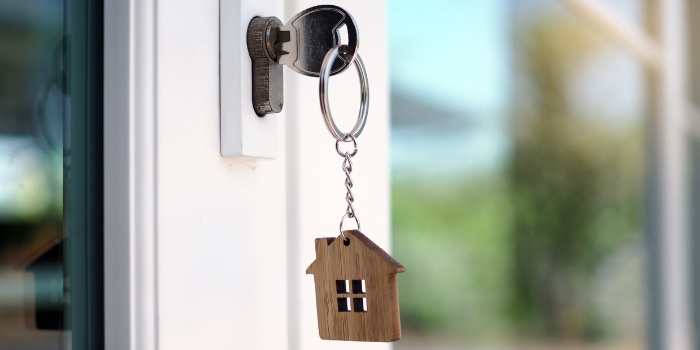Embarking on a home renovation project is an exciting endeavor that allows homeowners to bring their creative visions to life and transform their living spaces. Whether it’s a kitchen makeover, bathroom upgrade, or full-scale remodeling, the process involves a series of tasks that require careful planning, execution, and attention to detail. Amidst the excitement, it’s crucial not to overlook safety considerations. DIY enthusiasts must prioritize their well-being and loved ones throughout the renovation journey.
This will explore essential DIY tips for a secure home renovation, ensuring that the project yields beautiful results and fosters a safe environment for everyone involved. From identifying potential hazards to implementing preventive measures, these guidelines will help homeowners navigate the world of home improvement with confidence and peace of mind.

Conduct a thorough safety inspection
Before diving into any renovation project, conducting a comprehensive safety inspection of the entire home is essential. Take note of potential hazards, such as loose handrails, uneven flooring, exposed wires, or any existing damage that might be exacerbated during the renovation process. It’s also important to inspect all elements of the project including self tapping screws and other materials to determine whether they need replacing. Look for signs of water leaks, mold, or pests that could compromise the house’s structural integrity and overall safety.
Safety gear and equipment are also crucial elements of any home renovation project. Always use the appropriate protective gear to shield yourself from potential hazards. Depending on the nature of the project, safety gear may include hard hats, goggles, masks, gloves, and ear protection. Invest in quality tools and equipment, as they ensure better results and minimize the risk of accidents and injuries.
When working with power tools, read the manufacturer’s instructions carefully and follow all safety guidelines. Keep tools in good condition, and never operate them if damaged or malfunctioning. Always remember to use the right tool for the task, as improvising with the wrong tool can lead to accidents and subpar results.
Secure the work area
The work area can quickly become cluttered and hazardous during a home renovation. Take the time to keep the workspace organized and free of obstacles that could lead to trips or falls. Tuck away extension cords and hoses to prevent tripping hazards and keep tools and materials neatly stored when not in use.
If you have children or pets, creating a secure barrier around the work area is essential to prevent them from entering and accidentally getting hurt. Consider using safety gates or temporary fencing to cordon off the renovation site.
Follow proper electrical safety precautions
Electrical work is standard in many home renovations, and it’s crucial to approach it cautiously. If you need to become more experienced with electrical systems, hiring a licensed electrician to handle any electrical modifications or installations is best. Working with electricity without the necessary expertise can lead to severe injuries or even fire hazards.
If you’re confident handling electrical tasks, always turn off the power to the area you’re working on at the circuit breaker. Use a non-contact voltage tester to verify the power is off before proceeding. Avoid overloading circuits, and never use damaged or frayed electrical cords. Always use Ground Fault Circuit Interrupter (GFCI) outlets in areas where water is present, such as bathrooms and kitchens.
Structural integrity and load-bearing considerations
One critical aspect of DIY home renovations that often requires special attention is the property’s structural integrity. Specific projects, such as removing walls, adding room extensions, or installing heavy fixtures, can significantly impact the load-bearing capabilities of the house. It’s vital to consult with a structural engineer or a qualified professional before taking on such tasks.
Structural engineers can assess the existing framework and guide how to safely proceed with the renovation while ensuring the overall stability and safety of the home. They can also advise on suitable materials and construction techniques to maintain the structure’s integrity throughout the renovation.
Working with chemicals and hazardous materials
Many home renovation projects use chemicals and hazardous materials, such as paint, adhesives, solvents, and asbestos-containing materials (ACMs). Handling these substances with care is crucial to protect your health and the environment.
When working with chemicals, always follow the manufacturer’s safety instructions and use them in well-ventilated areas. Wear appropriate protective gear, such as gloves and masks, to avoid direct contact with the substances.
For projects involving ACMs, such as older buildings with asbestos-containing insulation or floor tiles, hiring professionals trained in safely removing and disposing of these materials is best. Disturbing or mishandling asbestos can release harmful fibers into the air, posing a severe health risk to anyone nearby.
With that said
Undertaking a home renovation project is an exciting opportunity to create the living space of your dreams. However, it’s essential not to overlook safety in pursuing beauty and functionality. By conducting a thorough safety inspection, using proper safety gear and equipment, securing the work area, and following electrical safety precautions, homeowners can ensure a secure and prosperous DIY renovation experience. By prioritizing safety, homeowners can enjoy the satisfaction of a beautifully transformed home while protecting the well-being of themselves and their loved ones.
